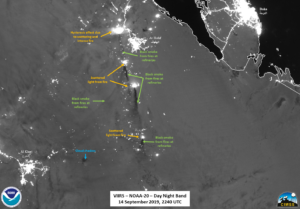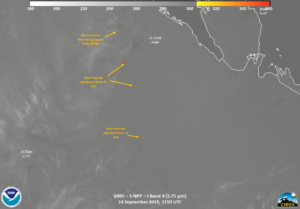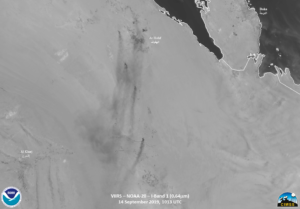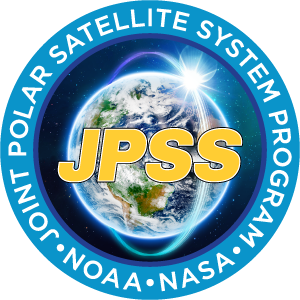« Back to "14 September 2019 Drone Strikes on Saudi Arabia"
Saudi Arabia refinery fires from morning of 15 September 2019
Posted: September 15, 2019
Fires continue to rage at the Saudi Aramco processing facility in Abqaiq (بقيق) and the Khurais oil field (حقل خريص) which were struck on the morning of 14 September 2019. Note that the times are used are in UTC and Saudi Arabia is UTC+3. The orientation of the passes was such that both S-NPP at 2150UTC and then NOAA-20 2240UTC were able to observed the region under a Full Moon on the night of 14 September 2019 (UTC). This allowed for observations such as the smoke from the Abqaiq (بقيق) processing facility and the Khurais oil field (حقل خريص) as well as the increased flaring from the gas-oil separation plants at the Ghawar (الغوار) oil field from both satellites in successive passes, as show in the slider below
Of note is an interesting feature is the hysteresis effect near the Abqaiq (بقيق) processing facility in the NOAA-20 imagery, as shown below
This could be due to some increase in the fire or increased scattering due to the smoke. In addition, one can compare the NOAA-20 and NPP the previous nights imagery (13 September 2019, UTC) to see the extent of the disaster from one day to the next.
Differences in the M10 (1.6μm), M11 (2.1μm) and M13 (4.05μm) channels could also be seen in comparing to the imagery from the 13th. An example of this is shown below in the M11 (2.1μm) from NOAA-20 on the 14th as compared to NPP on the 13th.
Note the increase in thermal signatures between the two days. This is also seen in the other channels as well, for example the M13 (4.05μm) band from N20 on the evening of 14 Sept as compared to the previous day
Smoke signatures can also be faintly seen in the I04 (3.95μm) channel as well.
The resulting smoke from the fires as well as increased flaring from the gas-oil separation plants at the Ghawar (الغوار) oil field as a result of the strikes could also be easily be seen in the I01 (0.64μm) visible imagery during the day of 15 September 2019, shown below.
Due to the fact that the desert regions are extremely hot during the day means that the traditional IR enhancements must be heavily modified. In addition, the NIR channels are heavily influenced by the solar reflections. Algorithms, such as the VIIRS Active Fires algorithm, take care of such surface effects leading to identification of hot spots in an easy manner.






